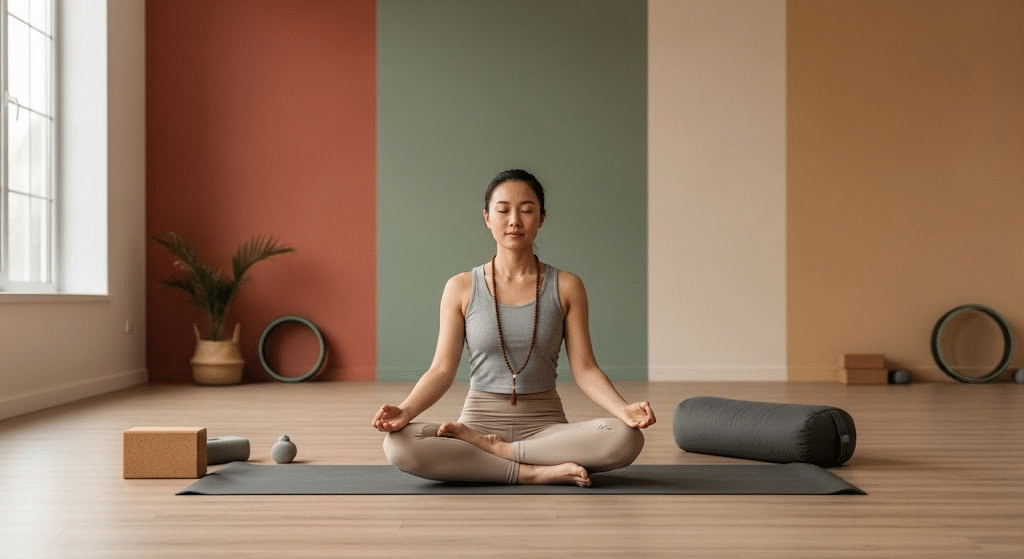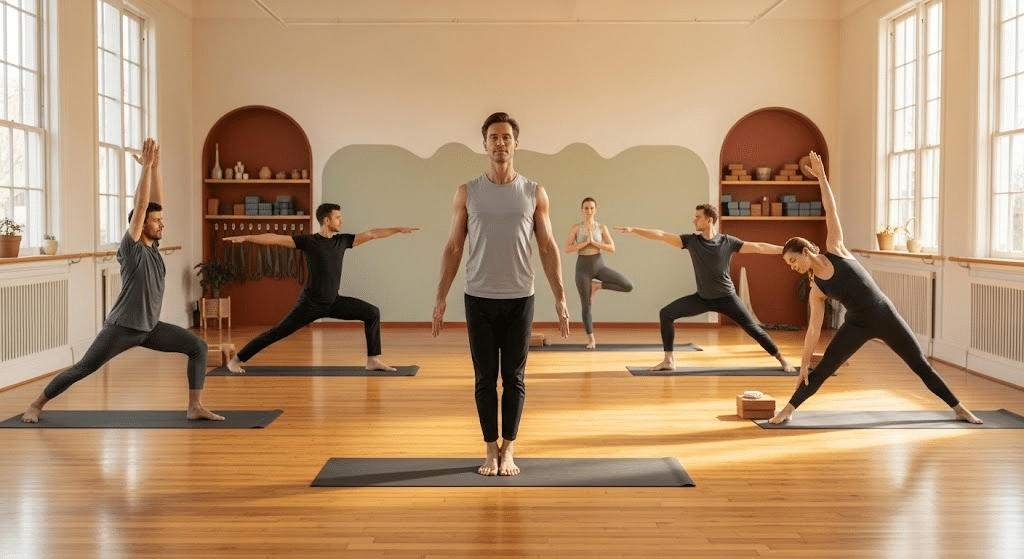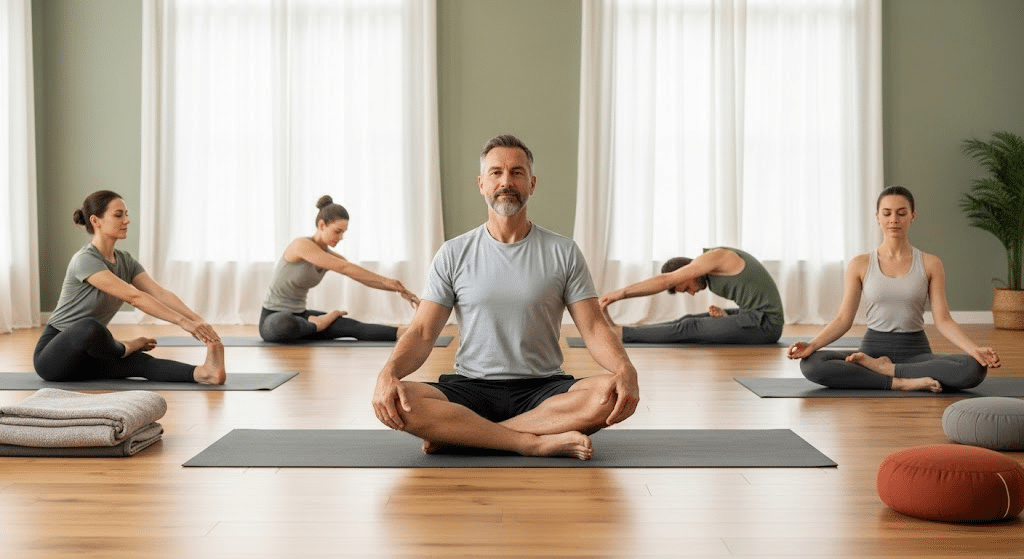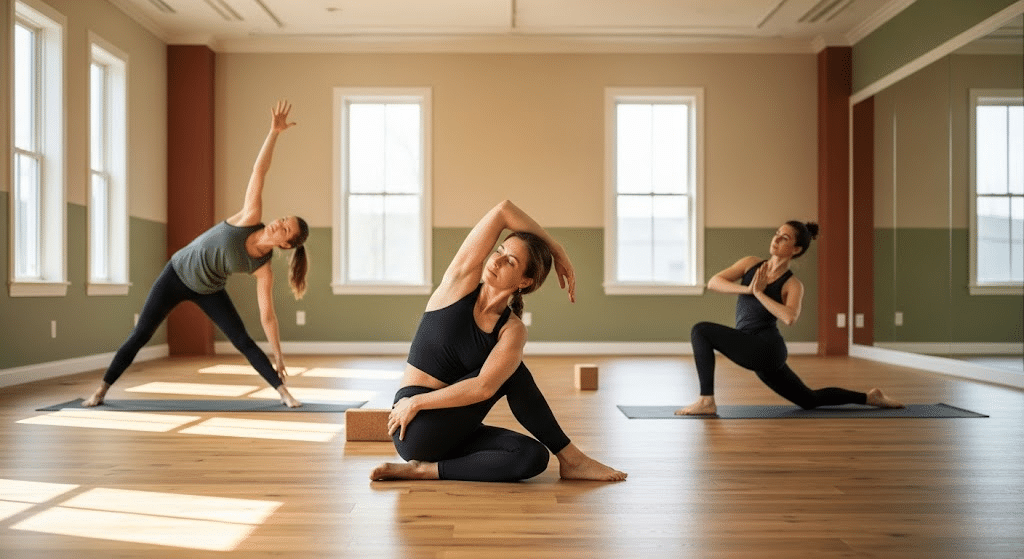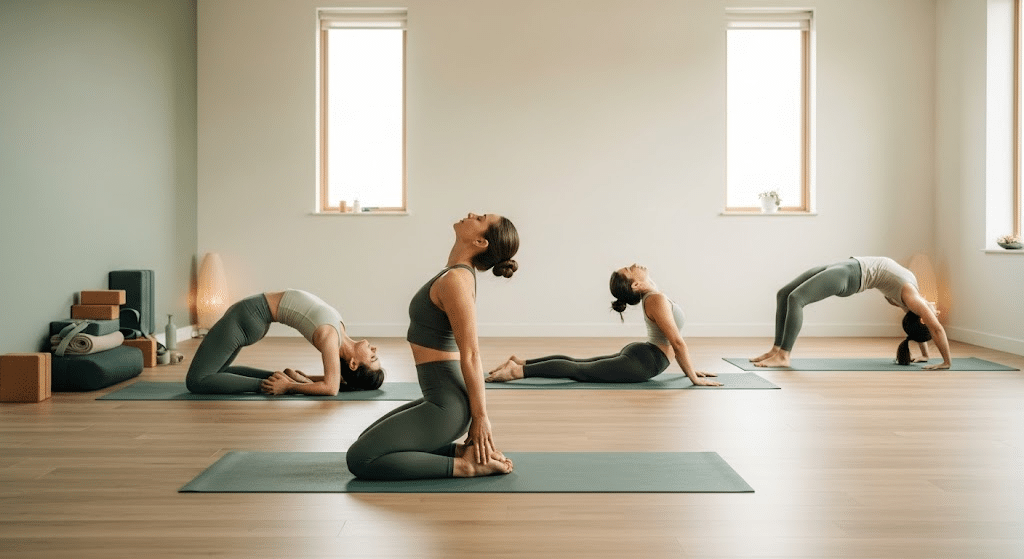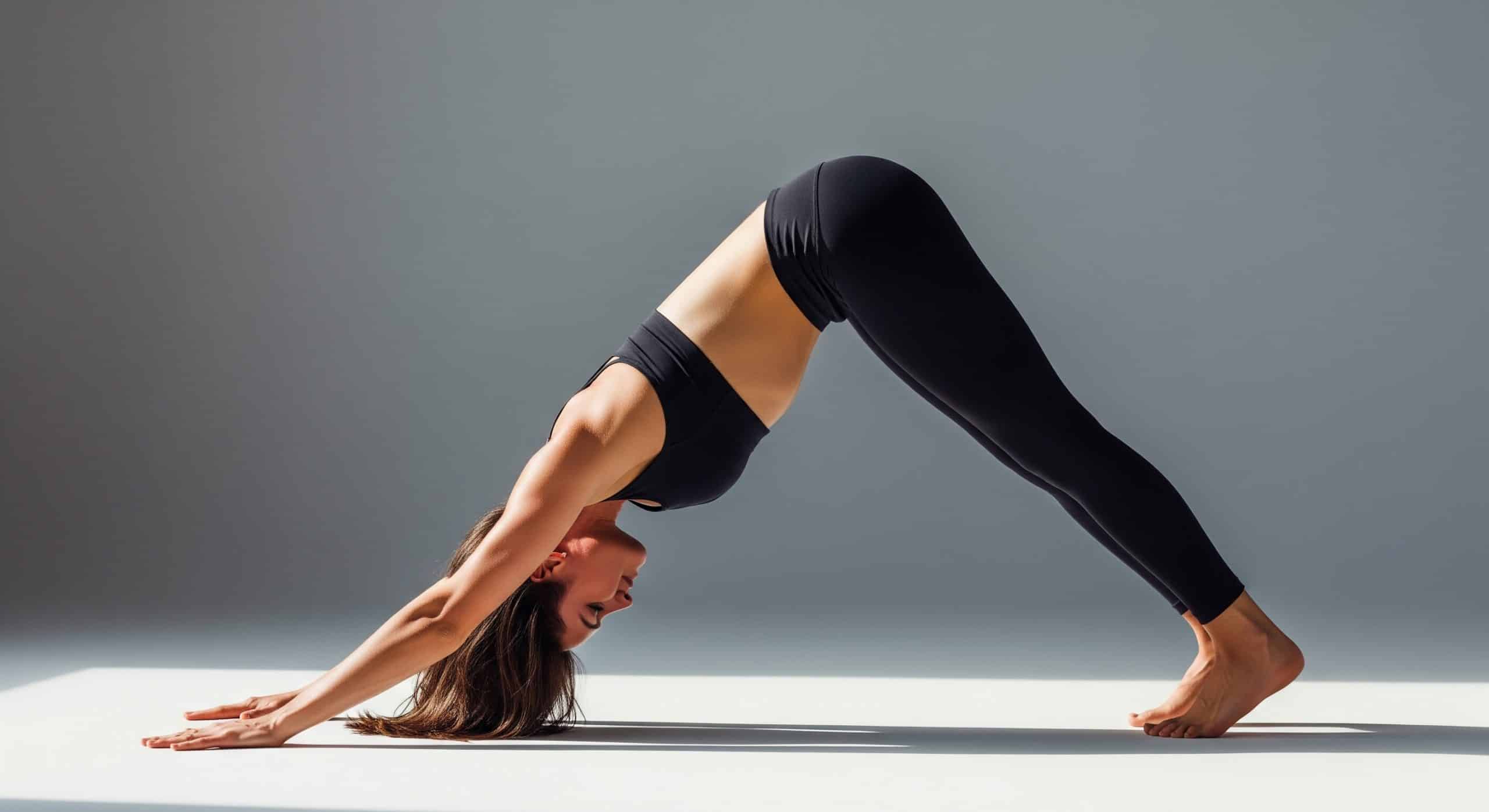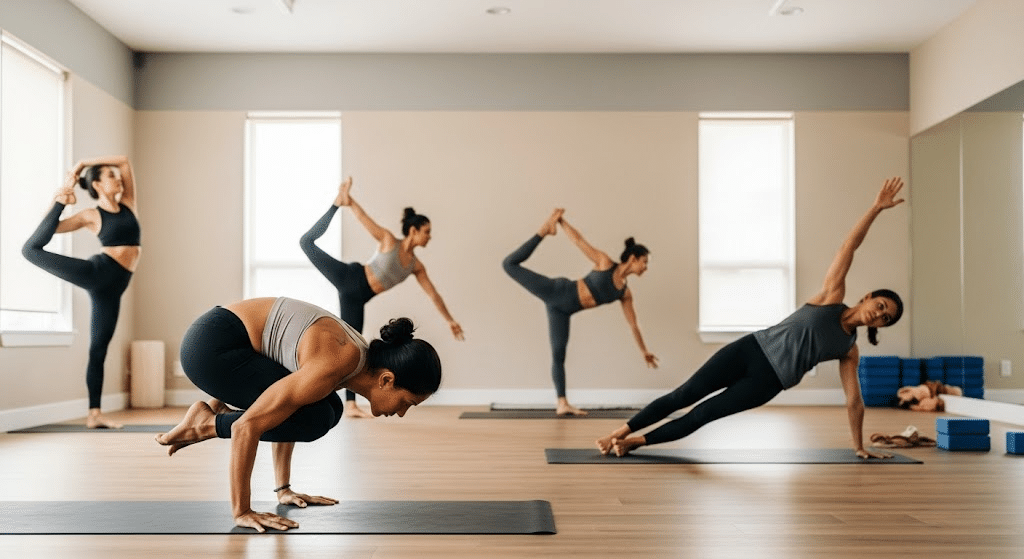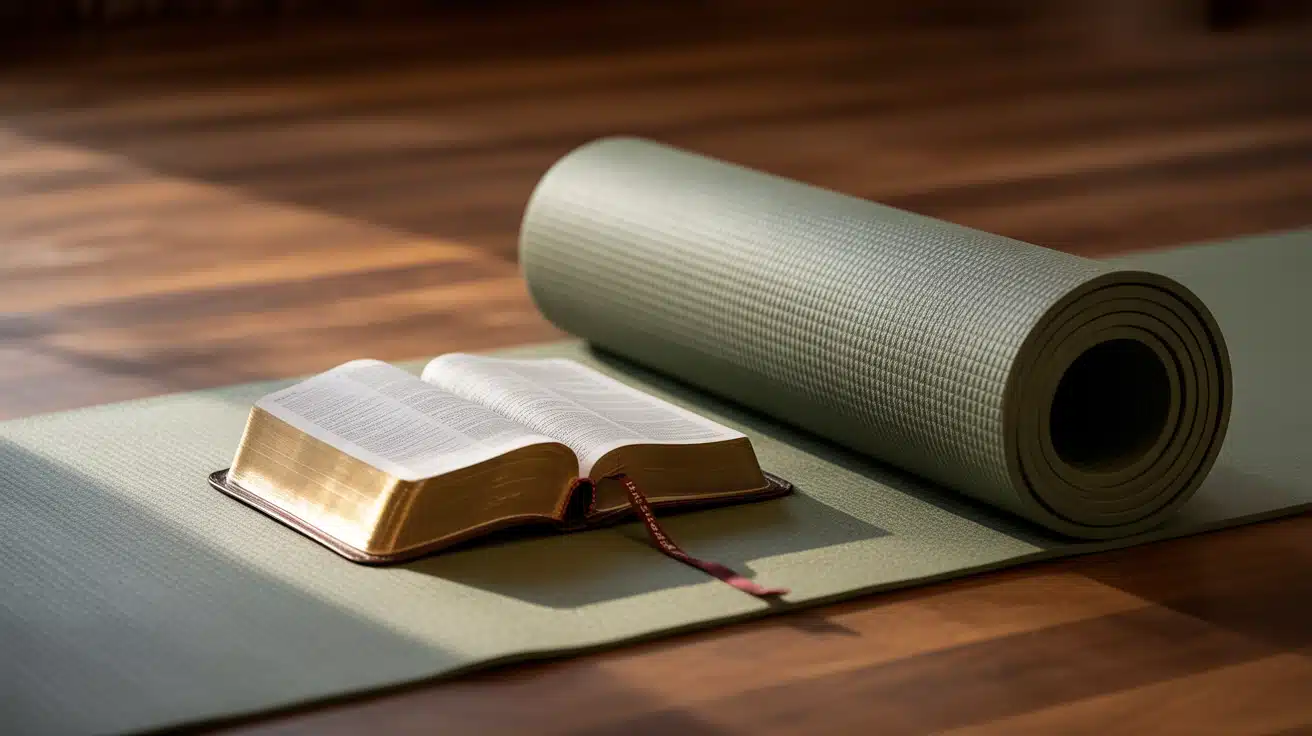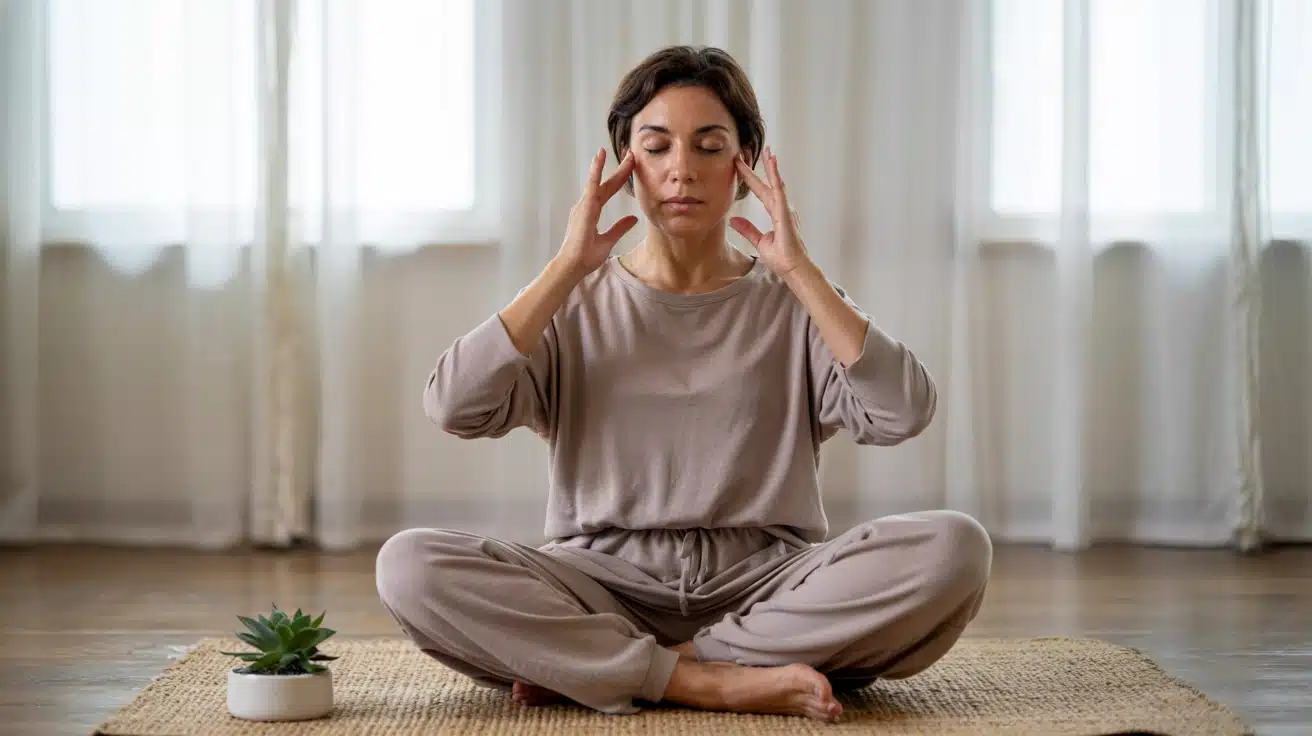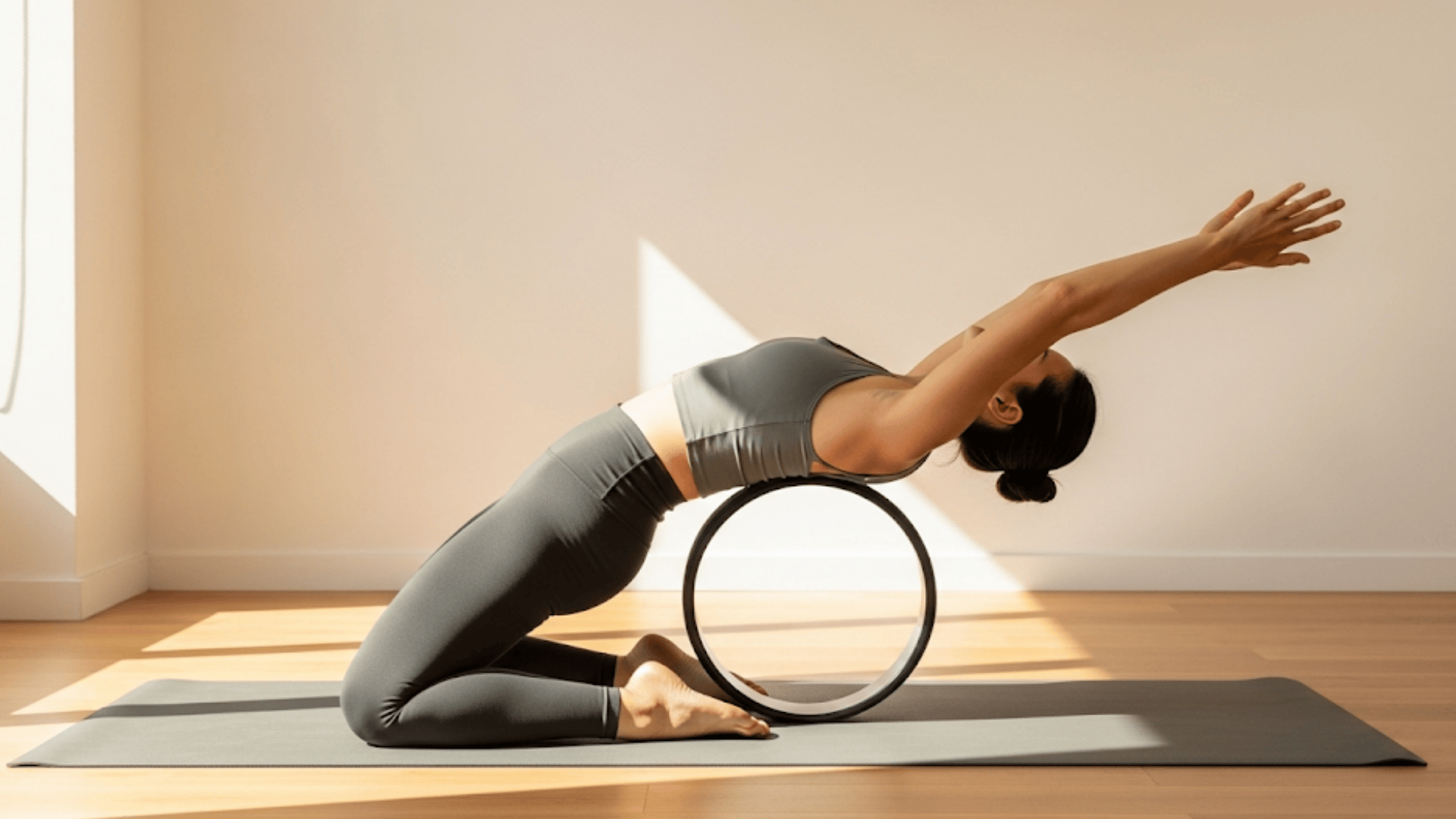Have you ever wondered how many yoga poses are there while scrolling through social media or sitting in your first yoga class?
This question puzzles many beginners and even experienced practitioners. The answer isn’t straightforward because different yoga traditions count poses differently.
Understanding how many yoga poses exist will help you set realistic expectations for your practice and appreciate yoga’s rich history. You’ll learn why some sources mention dozens of poses while others claim thousands.
This article explores traditional numbers from ancient texts, examines modern cataloging methods, and explains why yoga poses continue to multiply.
You’ll gain a clear understanding of yoga’s vast landscape and practical advice for your own practice.
Curious how yoga is evolving today?
Explore modern yoga practices like mobile yoga that bring personalized sessions straight to your door—perfect for deepening your practice wherever you are.
Understanding Asanas: The Foundation of Yoga
Asanas are the physical postures that form the foundation of yoga practice. The word “asana” comes from Sanskrit and means “seat” or “posture.”
Initially, these poses were designed to prepare the body for meditation by creating stability and comfort.
Each asana serves a specific purpose, whether building strength, increasing flexibility, or promoting relaxation. They work on multiple levels – improving physical health while supporting mental well-being through stress reduction and enhanced focus.
Throughout history, different yoga traditions have cataloged varying numbers of these poses. Some ancient texts mention specific counts, while others describe endless possibilities.
This leads to the natural question that many practitioners ask: how many yoga poses are there exactly?
Modern Practice: Around 200 Poses
When people ask how many yoga poses are there in modern practice, today’s yoga world offers a concrete answer. Modern teachers and schools have cataloged poses in ways that make them accessible to students worldwide.
- Current yoga includes approximately 200+ widely practiced poses
- This count comes from poses taught in major schools and teacher training programs
- Sources give different counts based on how they categorize poses
- Some count basic poses only, while others include variations and transitions
Current Pose Breakdown:
| Pose Category | Number of Poses |
|---|---|
| Basic poses | 50-70 fundamental asanas |
| Common variations | 100-150 modified versions |
| Advanced poses | 50+ challenging asanas |
| Therapeutic adaptations | Countless modifications |
Popular yoga apps and books typically teach 100-200 poses. This gives students a solid foundation without overwhelming them.
Ancient Texts: The Sacred 84
Ancient texts provide a different answer to how many yoga poses there are, mentioning 84 fundamental poses.
This number appears in important scriptures like the Hatha Yoga Pradipika and Gheranda Samhita as the foundation of physical yoga practice.
Historical Origins: The Hatha Yoga Pradipika, written in the 15th century, states that Lord Shiva taught these poses to work on different parts of the body and mind. The Gheranda Samhita describes only 32 in detail, suggesting the full set was considered complete.
- Symbolic Meaning: This count holds special meaning in yoga philosophy. It represents:
- Completeness: A full system for physical and mental health
- Balance: Poses that work all body systems equally
- Sacred geometry: Numbers that connect to cosmic principles
Some teachers believe these poses cover every movement the human body needs. Others see it as a symbolic number representing infinite possibilities.
Did You Know?
Ancient legends speak of 8,400,000 yoga poses created by Lord Shiva, with one pose for each living species on Earth. Modern teachers view this as symbolic, representing yoga's infinite potential and reminding us that practice is about exploring movement and breath, not mastering a fixed set of poses.
Types of Yoga Poses
Yoga poses fall into several main categories. Each type serves different purposes and works on specific parts of your body and mind.
Understanding these categories helps answer how many yoga poses are there by showing the diversity within each type.
1. Famous Standing Yoga Poses
Standing poses build a strong foundation for your practice. They teach proper alignment and engage your entire lower body.
- Mountain Pose (Tadasana) is the base for all standing poses.
- Warrior poses (Virabhadrasana I and II) build leg strength while opening the hips.
- Tree Pose (Vrikshasana) challenges balance and opens the hips.
- Triangle Pose (Trikonasana) stretches your side body while strengthening your legs.
2. Popular Seated Yoga Poses
Seated poses focus on flexibility and calm your mind. They work mainly on hip mobility and spine health.
- Easy Pose (Sukhasana) provides a comfortable meditation base.
- Bound Angle Pose (Baddha Konasana) targets the inner thighs and groin muscles.
- Seated Forward Fold (Paschimottanasana) stretches your entire back body.
- Lotus Pose (Padmasana) is the traditional meditation posture for advanced practitioners.
3. Helpful Twisting Yoga Poses
Twisting movements improve spine mobility and massage internal organs. You can do these poses seated, standing, or lying down.
- Seated Spinal Twist (Ardha Matsyendrasana) works your entire spine.
- Revolved Triangle (Parivrtta Trikonasana) combines standing strength with spinal rotation.
- Twisted Lunge (Parivrtta Anjaneyasana) opens the hips while rotating your spine.
4. Backbend Yoga Poses
Backbends counter forward-rounded posture from desk work. They open your chest and strengthen your back muscles.
- Bridge Pose (Setu Bandhasana) offers gentle backbending for beginners.
- Cobra Pose (Bhujangasana) teaches active back strengthening.
- Camel Pose (Ustrasana) provides deeper backbending that opens the throat and chest.
- Wheel Pose (Urdhva Dhanurasana) is an advanced backbend requiring full-body strength.
5. Inversion Yoga Poses
Inversions reverse your relationship with gravity. They encourage fresh blood flow to your brain.
- Downward Dog (Adho Mukha Svanasana) provides mild inversion while strengthening arms.
- Legs Up the Wall (Viparita Karani) offers gentle inversion for relaxation.
- Shoulder Stand (Sarvangasana) is called the “queen of poses” for its calming effects.
- Headstand (Sirsasana) is the “king of poses,” requiring significant strength and balance.
6. Balance Poses
Balance poses a challenge to stability and develops small stabilizing muscles. They require intense concentration and mental focus.
- Eagle Pose (Garudasana) combines balance with binding movements.
- Dancer’s Pose (Natarajasana) creates graceful balance while opening your chest.
- Crow Pose (Bakasana) introduces arm balancing and builds upper body strength.
- Side Plank (Vasisthasana) strengthens your entire side body.
Why Yoga Poses Keep Multiplying?
The question of how many yoga poses are there becomes complex because teachers and students constantly adapt the practice. This flexibility makes yoga accessible to different bodies and needs.
Unlike fixed exercise systems, yoga thrives on modification and personalization. What works for a young athlete won’t suit someone recovering from injury.
Modern yoga also serves different purposes than the ancient practice – from stress relief to physical fitness to injury rehabilitation.
Adapting to Individual Needs
Body Type Variations
Poses must accommodate different body types and abilities. Teachers create variations for height and limb length, flexibility levels, strength capabilities, and joint mobility differences. A tall person needs different modifications than someone with shorter limbs.
Health and Life Stage Adaptations
Many practitioners have specific health needs that require modifications. Teachers adapt poses for injuries and limitations, pregnancy, age-appropriate versions, and therapeutic applications. These modifications often become standard variations taught widely.
Skill Level Progressions
Students progress at different rates and need appropriate challenges. Teachers offer beginner-friendly versions, intermediate progressions, advanced challenges, and accessible alternatives. Each progression level essentially creates a new variation.
This constant adaptation means that when people ask how many yoga poses are there, the answer depends on how you count them. The core poses remain the same, but the variations are nearly limitless.
The Bottom Line
Hence, the ancient texts speak of fundamental poses, while legends mention millions of possibilities. Modern yoga typically includes hundreds of commonly practiced poses across different schools.
What matters most isn’t the exact count of how many yoga poses exist, but finding the ones that work for your body and mind. The key is consistency, proper alignment, and listening to your body regardless of how many poses you practice.
So when someone asks how many yoga poses are there, remember that the number matters less than finding the right ones for your practice.
Focus on mastering fundamental poses before seeking complex variations. Work with qualified teachers who can guide you safely and practice with mindfulness and respect.

